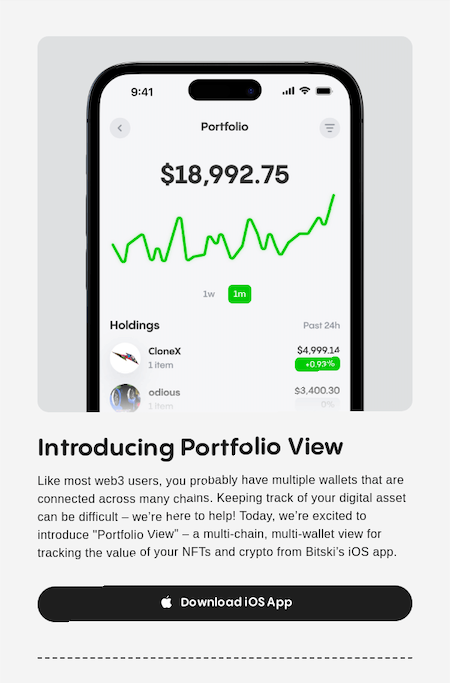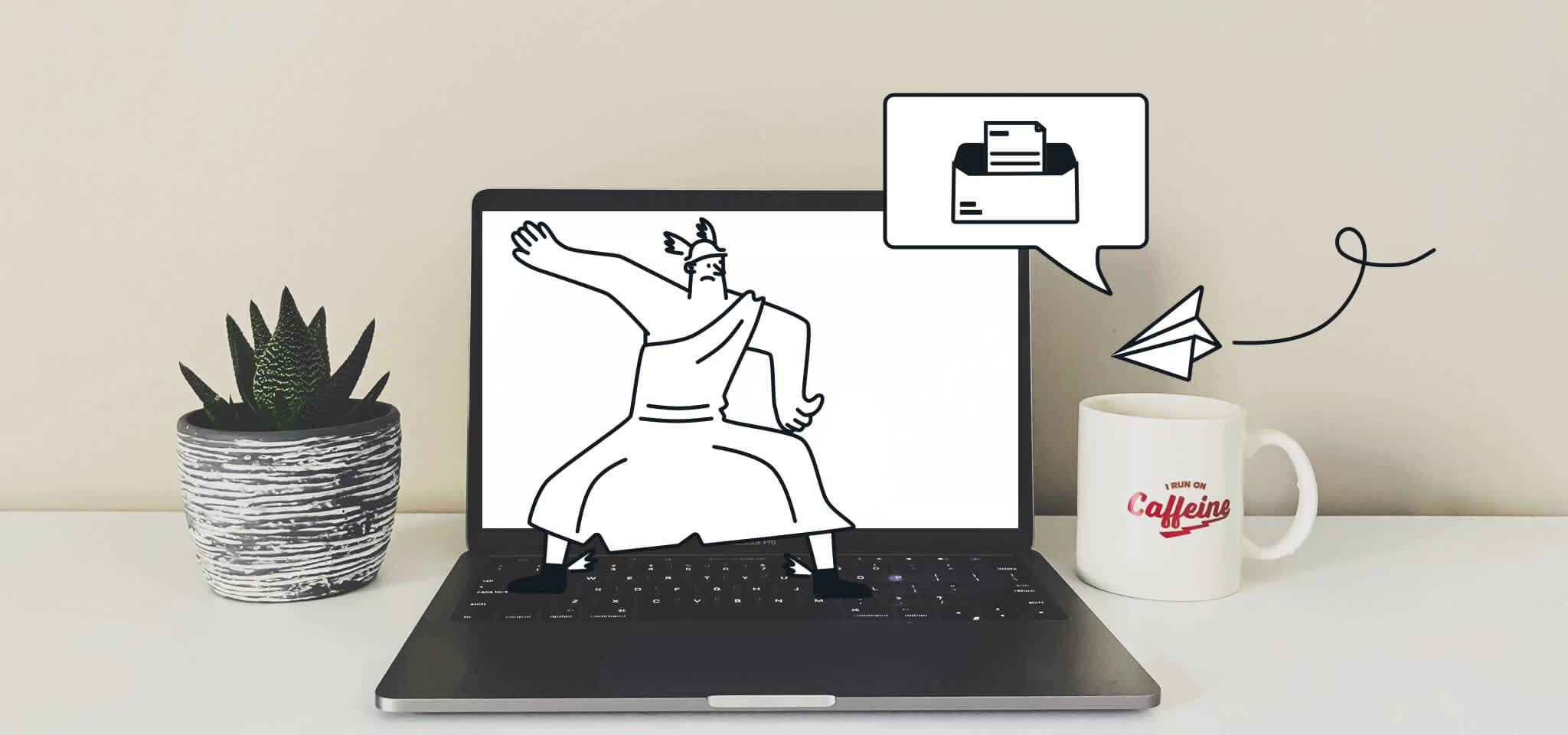Deliverability
Why email deliverability issues will ruin the customer experience
Consistently landing in the inbox is important if you want satisfied customers. Find out why improving email deliverability is key to making sure you meet their expectations and provide an optimal customer experience.

PUBLISHED ON
You know that feeling when you’re anxiously waiting for an important package to arrive, but it doesn’t show up at the time you expected or maybe even needed it? That's frustrating.
Many of your customers feel the same way when deliverability problems prevent email messages from reaching their inboxes. Some of those messages could be super important. Others may have helpful information or an opportunity to shop and save.
If mailbox providers decide to reject those messages or filter your emails into spam, most people aren’t going to blame Gmail, Yahoo Mail, or Outlook. They’re going assume something is wrong on your end. And they may be right.
It’s your responsibility to do everything you can to make sure as many emails as possible reach your subscribers’ inboxes. But it’s worth the effort. When it comes to the ideal customer experience, your emails are an irreplaceable piece of the puzzle.
Table of content
1. Double opt-in and verification emails
2. Onboarding emails
3. Promotional emails
4. Newsletter content
5. Order confirmation emails
6. Password reset emails
7. Product update emails
8. Customer service emails
The benefits of landing in the inbox
Our colleagues at Sinch Mailgun recently released an exclusive report, The state of email deliverability 2023. It includes results from a survey of nearly 2,000 email senders around the world.
So, what’s the point of focusing on email deliverability? When we asked senders who prioritize inbox placement about the advantages, 40% told us the biggest benefit is Improved customer satisfaction. These are email senders from businesses of all types and sizes and a wide variety of industries. They understand that email is an irreplaceable part of the customer experience.

The next closest benefits of deliverability were Increased revenue from email (18.6%) and Reaching more leads and prospects (13.3%). Even though email marketing ROI is extremely high, more than twice as many senders chose the advantage of satisfied customers over making more money. That says something about the importance of the inbox to the customer experience.
What is the customer experience anyway?
Customer experience (CX) can be defined as the way your customers perceive your brand based on all the interactions they have with your company. That could include many different touchpoints:
How they first hear about you
What others say about your products and services
The online checkout process
The quality of your products and services
The timeliness of deliveries and updates
What you post on social media.
Interactions they’ve had with customer support
And a whole lot more...
Communication plays a huge role in the customer experience. And that’s where email enters the picture. The inbox may be the most important channel for communications between brands and consumers.
The customer experience is all about when and how you engage with people on their buyer’s journey.
Communication plays a huge role in the customer experience. And that’s where email enters the picture. The inbox may be the most important channel for communications between brands and consumers.
8 types of email communication that impact CX
Let’s take a closer look at how deliverability fails lead to less-than-stellar CX. Here are seven different types of emails that play a role in the way people perceive your company. We’ll explain how they support your customers throughout the buyer’s journey and how they might feel if these messages never show up in their inboxes.
1. Double opt-in and verification emails
Even before welcome emails arrive, you may be asking new contacts to confirm their email address as well as their consent to receive promotional messages. Make sure those very first emails land in the inbox.
“The state of email deliverability 2023” from Sinch Mailgun found that just under half of senders say they’re using a double opt-in to confirm newly added contacts. This process involves asking new customers or subscribers to click a link in a message. This action verifies their intent to sign up for your emails, create an account, or use your platform.
Let’s say you’re ready to start using a new online platform, but first you need to verify your email. All you need to do is click one more button and you’re in, but where is that verification email? Speed of delivery and inbox placement are crucial at this point in the customer journey.
Another benefit of the double opt-in is that it stops spambots from abusing your online forms. Sometimes, malicious software programs use stolen contact information from real people to fill out forms. If you start emailing these people, they won’t be expecting it and may mark your messages as spam. Plus, you’ll unknowingly be processing data without truly getting consent. That could have legal ramifications in terms of privacy laws like GDPR.
The double opt-in is an email deliverability best practice that protects both customers and senders, but what good is it if your customer is left waiting for that double opt-in you promised, unsure if they’ve successfully signed up to your marketing emails or not?
2. Onboarding emails
You only have one chance to make a good first impression, and the welcome email is your opportunity to start the inbox experience off on the right foot. Welcome emails are generally the first touchpoint in an onboarding series and often provide essential information to help your user make the most of your product or service.
Imagine showing up to a party and nobody says “hi” to you. That’s kind of how it feels when someone signs up to receive emails from a brand and it’s nothing but crickets in their inbox. If your welcome emails end up in spam, new subscribers may feel like you don’t care or are ignoring them.
Here’s a great example of a welcoming onboarding email from Airbnb:

In addition to greeting someone who recently signed up, the email also includes important next steps that will make the customer experience better for new subscribers. Onboarding emails are often full of useful information. They can also improve product adoption and customer retention.
Find out more about how to improve the customer experience with emails that are connected to a lifecycle marketing strategy. Get tips from Sinch Mailjet’s lifecycle marketing mastermind.
3. Promotional emails
Let’s be honest, most people sign up for email marketing messages because they’re looking for deals from their favorite brands. For these customers, your BOGO sales, exclusive offers, and coupon codes are a major part of the customer experience.
Imagine being a huge fan of Forever 21 and a week after Black Friday you happen to check your spam folder only to find this: A countdown timer for a huge sale, but the timer has already hit zero.

How would you feel if you really wanted to make a purchase but your time for claiming an offer had run out? Better email deliverability can prevent problems like this from ruining the customer experience.
4. Newsletter content
For a lot of brands, the content they create is part of the customer experience. In some cases, you could even think of articles, videos, guides, and other types of content as extensions of a brand’s products and services.
Email newsletters are one of the most effective ways to deliver content directly to the people who matter most – your customers. A solid content marketing strategy educates and entertains people while establishing trust and helping to move them along the customer journey.
As an email geek, you may look forward to the bi-weekly newsletters from Really Good Emails. How would you feel if they suddenly stopped showing up? It’d be pretty disappointing, right?
If you’re sending emails that subscribers are anticipating, you’re doing an awesome job. Don’t let deliverability problems mess that up.
Check out the email newsletter templates available on the Mailjet platform. These responsive templates look great on mobile and let you get a jumpstart on a professional design.
If your newsletters are being filtered into spam, that could be a significant roadblock on the path to purchase. At the very least, people are missing out on quality content that enhances the customer experience.
5. Order confirmation emails
Transactional emails are an undeniably important part of the customer experience. Many of the senders who chose Improved customer satisfaction as the biggest benefit of deliverability were thinking about these types of emails.
Messages connected to an online purchase are among the most common types of transactional emails. It’s easy to take an order confirmation email for granted. They usually aren’t as flashy as marketing emails or contain helpful content like your newsletter.
However, a strategically designed and written transactional email could be loaded with important information that your customers need. Take this order confirmation email from Harry’s for example:

Here’s what the customer gets out of this transactional email:
The order number
When the items are expected to arrive
A summary/receipt of the order
Shipping details
A link to check the order status
The number to contact customer support
There’s even a bit of an upsell prompting the customer to check out auto-renewals. Plus, Harry’s inserts some brand personality into its transactional email copy to make the customer experience friendly and memorable.
This order confirmation creates an excellent customer experience. If it were to land in spam, however, it would be a different story. The customer would be left wondering if the order actually went through and when it might show up. They may not have the order number to get help from customer service. What if they needed to correct shipping information?
Sure, they could go back to the website, log in to their account, and try to find the information there – if the brand does indeed provide that option. But that’s a hassle. Good customer experiences do not include hassles. Emails make everything easy...as long as they make it to the inbox.
6. Password reset emails
Password resets and verification emails may be the most important types of transactional messages. These emails make it possible for customers to access their accounts or your application.
In this case, not only is landing in the inbox important, so is getting the email there as quickly as possible. Transactional emails are time sensitive, especially password resets and verification emails. That’s why Sinch Mailgun offers burst sending to its high-volume senders.
With a password reset, your users are already upset they’ve forgotten how to access what they need in that moment. They’re probably feeling a little impatient. Don’t make them wait, and don’t make them check their spam folder either.
7. Product update emails
The inbox is also a good place to make product release announcements so that customers know what’s new or what’s about to change.
Product update emails could alert users to all sorts of things, including security issues and changes to the privacy policy or terms of use. They contribute to customer experience in an even bigger way when these campaigns show people how to get the most out of products and services they’re already paying for.
Check out this email from Bitski that highlights a useful new feature for its users. The update marks a significant improvement in the user experience (a close cousin to customer experience). Unfortunately, if this email were to end up in spam, customers may have no idea the enhancement is available.

8. Customer service emails
There are also times when individuals within a company will need to reach out to customers via email. It’s not all about marketing and transactions. Support team members want their emails to reach the inbox too.
You might assume you don’t have to worry about these communications since they are person-to-person rather than an email blast from a bulk sender. But if customer service emails are being sent from the same IP address or domain as your marketing emails, deliverability could be an issue.
Support is often a necessity when it comes to the customer experience. While it may not be your job to write and send customer service emails, your overall sending practices could affect the chances for support communications going to spam or the inbox.
This is just one of many reasons why it’s crucial to have some knowledge of how email deliverability works. That includes understanding your sender reputation, which is how mailbox providers decide whether to accept, reject, or quarantine your message to the junk folder.
Find out more about optimizing email deliverability
The Sinch Mailgun report on deliverability found around one in five senders surveyed were either very or somewhat unconfident in their knowledge of deliverability.
We’ve told you a lot about why prioritizing email deliverability is beneficial to your customers, but we’ve barely begun to explain how to do that.
While the topic can be complex and confusing, there are many things marketers should know about email deliverability. You can learn more about improving inbox placement right here on the Sinch Mailjet blog. That includes deliverability basics as well as expert advice for avoiding the spam folder.
Email marketers are doing important work. Don’t let anyone tell you otherwise. The communications you send are directly connected to customer satisfaction. That’s why deliverability matters.
Download the full report
The state of email deliverability 2023
Dive deeper into email deliverability so you’re armed with the knowledge you need to stay out of spam. Get your hands on “The state of email deliverability 2023” and uncover the truth about what it takes to consistently land in the inbox.







